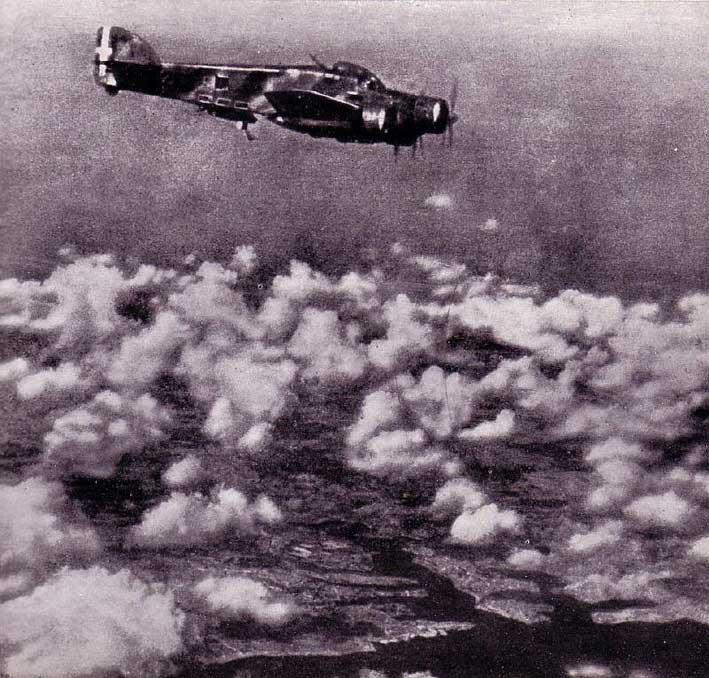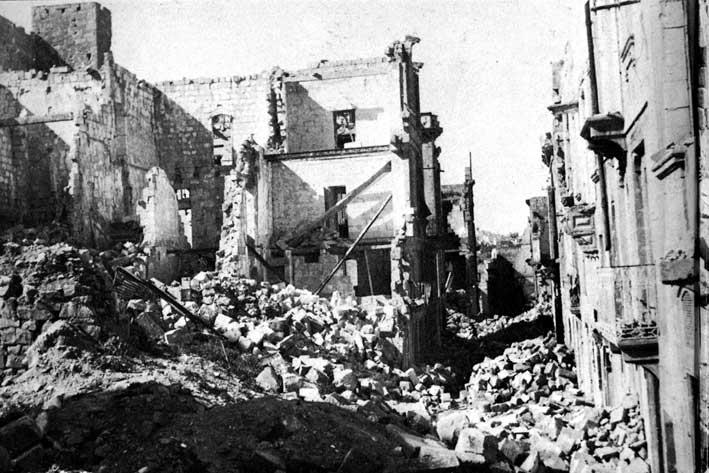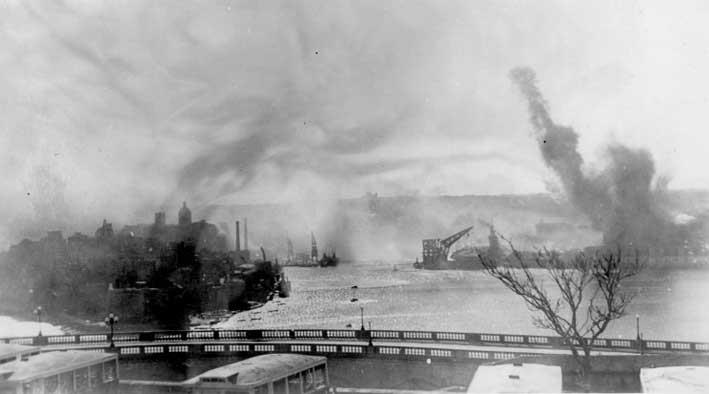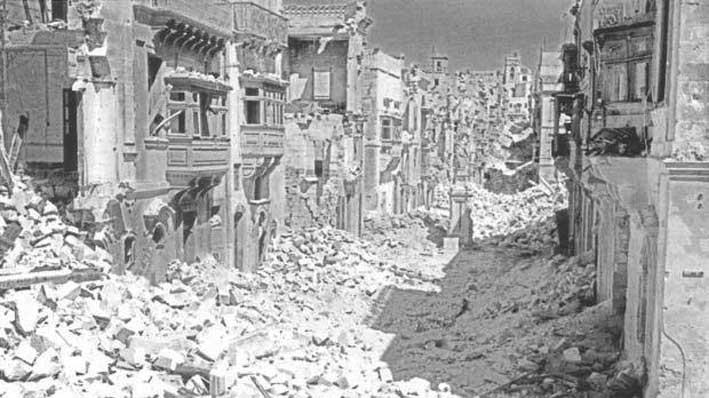Eighty years ago, Malta was going through one of the darkest chapters in its history. 16 January 1941 would mark the start of the first air raids on the Maltese Islands by the German air force, the Luftwaffe, and what happened over the next few days would become known as the Illustrious Blitz.
As part of the British Empire, Malta had officially been at war since 3 September 1939, when Great Britain and France had declared hostilities against Germany, after the latter’s invasion of Poland two days earlier. But despite the introduction of new measures locally, such as mobilisation and recruitment, the introduction of curfew and blackout regulations and the internment of foreigners, as well as a number of Maltese who were considered to be pro-Italian, the war still felt far away from the idyllic Maltese Islands.

An Italian SM.79 Sparviero bomber over Malta
That sense of tranquillity would be shattered in the spring of 1940, as Nazi Germany started its blitzkrieg campaign in Western Europe, with Denmark, Norway, Holland, Belgium and France falling in quick succession. With the war seemingly approaching a quick end, the Italian dictator Benito Mussolini, who thus far had kept his country out of the conflict, decided to throw in his lot with Adolf Hitler, so as to share the spoils of victory. As his declaration of war was broadcast on the radio waves on 10 June 1940, the Maltese knew that their island was now on the front line.
And they did not have to wait long for the first attack, at 6.55am on the following morning, the air raid sirens sounded for the first time as 10 bombers of the Italian air force, the Regia Aeronautica, escorted from their air bases in Sicily by fighters, dropped bombs on the Grand Harbour and the airfield at Ħal Far, in what would be the first of seven air attacks that day. Despite negligible damage to military targets, 11 civilians were killed and over a 100 injured. Panic ensued, as many packed essential belongings and sought refuge as far as possible from the harbour area.
Although the bombings would continue over the following days, weeks and months, and the island started to take on a different appearance, with bomb craters and damaged or destroyed buildings more commonplace, it soon became apparent to the Maltese that things were not as bad as had first been feared, and life had to go on. By the end of the year, it was clear to all that the Regia Aeronautica had failed to overcome Malta’s defences and to make matters worse, the Italians had also suffered a big reverse in North Africa.

Mussolini declares war on Great Britain and France
Their German allies were forced to intervene in the Mediterranean theatre in order to prevent a complete Axis defeat in the region, with reinforcements being despatched to Libya – the Afrika Korps, led by the brilliant Erwin Rommel. These forces would need to be resupplied by sea and the German High Command was aware that Malta posed a dangerous threat to their supply routes; something had to be done. In early 1941, X. Fliegerkorps, a formation of the German Luftwaffe that specialised in anti-shipping operations, was transferred from Norway to Sicily to support the build-up of the Afrika Korps. Its aims were to protect Axis convoys to North Africa, prevent Allied shipping passing through the central Mediterranean and neutralising Malta.
At around the same time, the British were preparing to resupply Malta, Alexandria and Greece through a series of convoys codenamed Operation “Excess”, launched on 6 January 1941. Included in the strong naval escort was HMS Illustrious, the Royal Navy’s newest aircraft carrier. On 10 January, the convoy, well within range of the airfields in Sicily, came under fierce attack from German and Italian bombers and the Illustrious was repeatedly singled out. Soon she was enveloped in a mist of spray and towering columns of water as a result of repeated, determined dive-bombing attacks; in the space of a few minutes; the Illustrious was hit six times. Badly damaged, including her steering being knocked out of action and with 126 of her crew killed and 91 others wounded, the decision was taken to nurse her into the Grand Harbour, where she arrived just after 9pm, still on fire. She was berthed at Parlatorio Wharf, beneath Corradino Heights, for emergency repairs.

Bombed ruins in Senglea
Surprisingly, during the next five days, the Luftwaffe did not return to finish off the job, perhaps due to bad weather and the need to replenish depleted bomb stocks. In the dockyard, work continued round the clock to repair the Illustrious. But things would soon take a turn for the worse: the afternoon of 16 January would mark the start of what became known by the Maltese as the “Illustrious Blitz”, as German aircraft appeared over the Grand Harbour for the first time, intending to finish the Illustrious off at her moorings.
Junkers Ju 87 dive bombers, known as Stukas, launched attack after attack on the carrier, with the screeching of their air driven sirens, known as Jericho Trumpets, further contributing to the deafening noise of the explosions and the heavy anti-aircraft barrage that was put up by the defenders. Many who experienced the events at first hand were stunned by their ferocity. Incredibly, though bombs rained down on the dockyard, only one hit the Illustrious, but instead, many fell over the surrounding Three Cities, large parts of which were reduced to rubble. Hundreds of homes were destroyed or damaged and civilian casualties were high. The greatest tragedy took place in Birgu, where 35 people were killed when the crypt of St Lawrence Church, where they were sheltering, received a direct hit, causing the building to collapse on top of them. Although sounds could be heard from underneath the rubble up to three days later, no one was still alive by the time rescuers finally got to them.

The ‘Illustrious’ under air attack in French Creek
Over the next days, more raids ensued, although they never quite reached the same intensity seen on the 16th. In the dockyard, repair work continued round-the-clock, regardless of air raids or bad weather, as it was imperative for the carrier to leave Malta as soon as possible. Just before dusk on 23 January, the Illustrious was able to slip out of Grand Harbour under cover of darkness, bound for Alexandria, from where she would proceed to the United States of America for major repairs that would take the best part of a year.
For the Maltese, this episode marked the beginning of a new experience. The intensity of the German attacks came as a huge shock compared to the mild bombings of the Italians, which they had become used to. Immediately, there was a second exodus as thousands of inhabitants of the harbour area, who had returned to their homes after having been lulled into a false sense of security, once again fled in terror. The Luftwaffe now turned its attention to the airfields and other military targets and in the space of a few months reckoned to have brought Malta to its knees. They had certainly succeeded in protecting the Axis convoys to North Africa, enabling a massive build-up of men and material.

Victory Street in Senglea in the aftermath of the 'Illustrious Blitz'
However, towards the end of May 1941, X. Fliegerkorps was withdrawn from Sicily in preparation for Operation Barbarossa, the invasion of the Soviet Union, meaning that the Regia Aeronautica was once again entrusted with the responsibility of leading the bombing campaign over Malta. While the island was able to recover over the next few months, as the old pattern was once again established, the “Illustrious Blitz” would prove to be just a preview of the horrors the Maltese would experience the following spring, with the second coming of the Luftwaffe to the region.
www.colourmytravel.com